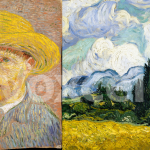Below are the sample questions and answers for IELTS Speaking Part 1 Introduction: ‘Old Buildings’. Each answer by Voxcel is written on Band 9 parameters. Click here to read how to structure your answers in your IELTS speaking test.
Each Topic of Part 1 covers questions of different types, including different tenses, to help you practice in the best way possible.
IELTS SPEAKING TOPICS PART 1 – OLD BUILDINGS
- Do you enjoy visiting old buildings? Why or why not?
Answer: Yes, I love exploring old buildings, it’s like stepping back in time. The architecture, craftsmanship, and stories behind them are fascinating. In addition, they evoke a sense of nostalgia that modern structures often lack.
- Are there any famous old buildings in your hometown? Which ones?
Answer: My hometown has a stunning cathedral that dates back centuries. Its intricate carvings and towering spires attract visitors from all over. Not only that, but it’s also a symbol of our cultural heritage, a true gem of the area.
- How do old buildings differ from modern ones?
Answer: Old buildings tend to focus on aesthetics and durability, with ornate details and natural materials like stone or wood. Modern buildings, however, prioritize functionality and minimalism. While both styles have their charm, they cater to different tastes and needs.
- Have you ever lived in or near an old building? What was it like?
Answer: Yes, I once rented an apartment in a converted Victorian house. The high ceilings and vintage tiles were beautiful, but maintenance issues cropped up frequently. Despite that, it had character that newer apartments just don’t possess.
- Would you prefer living in an old building or a modern one? Why?
Answer: I’d choose a modern building for convenience and reliability. Old buildings may look charming, but they often come with plumbing or electrical problems. That said, I admire their historical value and wouldn’t mind visiting them occasionally.
- Can you recall a memorable experience related to an old building?
Answer: Once, I toured an ancient castle during a trip abroad. Walking through its dimly lit halls and imagining royal banquets was surreal. It was one of those moments where history felt alive and tangible. It left a lasting impression.
- Do you think old buildings should be preserved? Why?
Answer: Absolutely! Old buildings serve as reminders of our past and contribute to a city’s identity. Demolishing them erases valuable history. Instead, efforts should be made to restore and repurpose them for future generations to appreciate.
- Are there any disadvantages to living in an old building?
Answer: Yes, outdated infrastructure can be a hassle, such as leaky pipes, drafty windows, and poor insulation are common issues. On top of that, renovations can be costly and time-consuming. Living in an old building requires patience and flexibility.
- How do old buildings reflect the history of a place?
Answer: Old buildings tell stories about the people, culture, and events of their era. For instance, a colonial-era church might reveal religious influences, while a factory could highlight industrial growth. Through these structures, we gain insight into the past.
- Do you think tourists are interested in old buildings? Why?
Answer: Definitely! Tourists are drawn to old buildings because they offer unique experiences and photo opportunities. Landmarks like castles, temples, and historic homes provide glimpses into local traditions and histories. As a result, they’re major attractions worldwide.
- Are there any old buildings you dislike? Why?
Answer: Some dilapidated buildings give me the creeps because they’re rundown and unsafe. While preserving history is important, neglecting upkeep ruins their appeal. At the end of the day, balance between preservation and safety is crucial.
- If you could restore an old building, what would you change?
Answer: I’d modernize the utilities while keeping the original architecture intact. Adding eco-friendly features like solar panels or energy-efficient lighting would make it sustainable. Ultimately, the goal would be to honor its legacy while adapting it for contemporary use.
Note: We have written questions and answers for all the IELTS Speaking Topics of Part 1. Click here to assess them. We aim to help the students as much as possible. We have also written IELTS Speaking Cue Cards, including their Part -3 on the scale of Band 9. However, we don’t promote cramming.
All the content on the Voxcel website is solely copyrighted and owned by us. If anyone copies and is found to be stealing, we reserve the right to take a copyright strike or necessary legal action. Feel free to browse our website for sample questions and answers.




